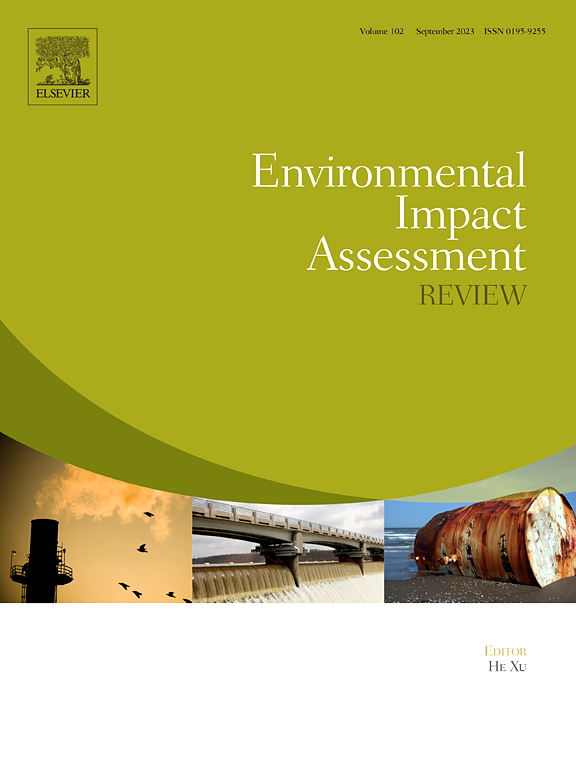Consistency and divergence in drivers of soil erosion risk: Insights from heterogeneous watersheds
IF 9.8
1区 社会学
Q1 ENVIRONMENTAL STUDIES
引用次数: 0
Abstract
Watersheds are shaped by a complex interplay of natural geographic conditions and socioeconomic factors, resulting in marked heterogeneity. However, the drivers and mechanisms underlying specific ecological risks, such as soil erosion (SE), may exhibit greater consistency than expected. Most existing studies focus on isolated risks within individual watersheds, often overlooking comparative insights across heterogeneous regions. To address this gap, we propose a multi-model watershed ecological risk analysis framework that integrates clustering algorithms, geostatistical models, and multivariate statistical methods. The framework is applied to three typical heterogeneous sub-watersheds in the Pearl River Basin, namely the Bei River Basin (BRB), the North and South Pan Basin (NSPB), and the Pearl River Delta (PRD), to analyze the spatiotemporal dynamics, key multidimensional driving factors, and the mechanisms driving SE risk from 2000 to 2020. The findings reveal that high-risk SE hotspots are primarily located in cropland, karst regions, and urbanized areas. Land use change is identified as the dominant driver of SE risk, exerting a stronger influence than climatic factors. Among the key indicators, fractional vegetation cover (FVC), cropland area coverage degree (CACD), and nighttime lights (NLT) consistently show the greatest explanatory power. Dominant pathways include soil–vegetation coupling in karst areas, climate–vegetation regulation in agricultural zones, and human activity–vegetation disturbance in urbanized landscapes. Structural equation modeling (PLS-SEM) reveals consistent latent variable structures across the three sub-watersheds, while highlighting marked differences in the strength and direction of effects. Vegetation emerged as the strongest determinant of SE risk, with total effects of FVC being highest in the BRB (β = −0.685, P < 0.01), followed by the PRD (β = −0.594, P < 0.01), and lowest in the NSPB (β = −0.494, P < 0.01). The relatively weaker vegetation effect in the NSPB may be attributed to its high agricultural intensity and extensive karst coverage, which jointly reduce the stabilizing capacity of vegetation. This heterogeneous watershed analysis framework is transferable and scalable, offering a robust foundation for advancing ecological risk assessments and informing precision watershed management under changing environmental conditions.
土壤侵蚀风险驱动因素的一致性和差异性:来自异质流域的见解
流域是由自然地理条件和社会经济因素的复杂相互作用形成的,因此具有明显的异质性。然而,特定生态风险(如土壤侵蚀)的驱动因素和机制可能表现出比预期更大的一致性。大多数现有的研究集中于单个流域内的孤立风险,往往忽略了跨异质区域的比较见解。为了解决这一问题,我们提出了一个集聚类算法、地质统计模型和多元统计方法于一体的多模型流域生态风险分析框架。将该框架应用于珠江流域3个典型非均质子流域,即北河流域(BRB)、南北盆盆地(NSPB)和珠江三角洲(PRD),分析了2000 - 2020年东南风风险的时空动态、关键多维驱动因素和驱动机制。研究结果表明,东南高发地区主要分布在农田、喀斯特地区和城市化地区。土地利用变化是东南风风险的主要驱动因素,其影响强于气候因子。在关键指标中,植被覆盖度(FVC)、耕地面积覆盖度(CACD)和夜间照度(NLT)的解释力最大。主要路径包括喀斯特地区土壤-植被耦合、农业区气候-植被调节和城市化景观中人类活动-植被干扰。结构方程模型(PLS-SEM)揭示了三个子流域一致的潜在变量结构,同时突出了影响强度和方向的显著差异。植被是SE风险的最强决定因素,植被覆盖度在BRB的总影响最大(β = - 0.685, P <;0.01),其次是PRD (β = - 0.594, P <;0.01),最低NSPB(β=−0.494,P & lt;0.01)。国家自然保护区的植被效应相对较弱,可能是由于其高农业强度和广泛的喀斯特覆盖,共同降低了植被的稳定能力。这种异质流域分析框架具有可转移性和可扩展性,为推进生态风险评估和在不断变化的环境条件下进行精确流域管理提供了坚实的基础。
本文章由计算机程序翻译,如有差异,请以英文原文为准。
求助全文
约1分钟内获得全文
求助全文
来源期刊

Environmental Impact Assessment Review
ENVIRONMENTAL STUDIES-
CiteScore
12.60
自引率
10.10%
发文量
200
审稿时长
33 days
期刊介绍:
Environmental Impact Assessment Review is an interdisciplinary journal that serves a global audience of practitioners, policymakers, and academics involved in assessing the environmental impact of policies, projects, processes, and products. The journal focuses on innovative theory and practice in environmental impact assessment (EIA). Papers are expected to present innovative ideas, be topical, and coherent. The journal emphasizes concepts, methods, techniques, approaches, and systems related to EIA theory and practice.
 求助内容:
求助内容: 应助结果提醒方式:
应助结果提醒方式:


